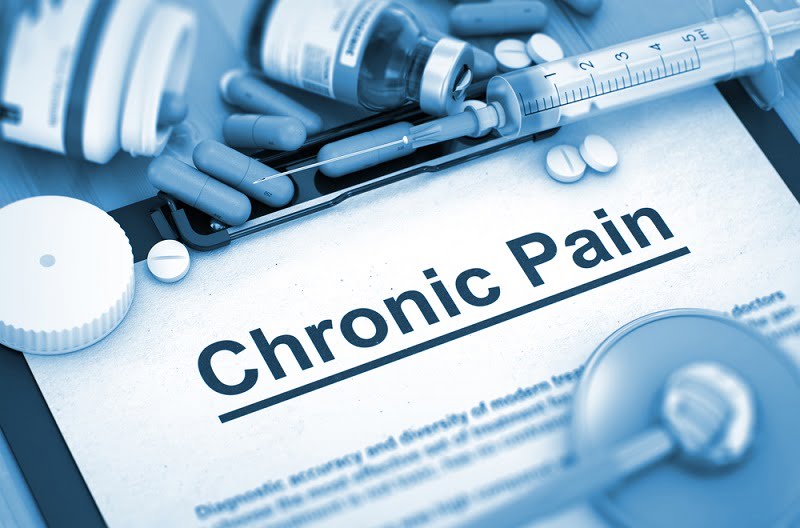There are an average of six million vehicle accidents in the United States each year. More than three million people are injured each year as the result of these accidents, and around two million people involved in car accidents experience permanent injuries each year. There are deaths and severe injuries that occur. For example, paralyzing spinal cord damage often occurs as a result of a traumatic blow to the spine. Severe injuries often occur, particularly when a large truck is also involved in an accident, and there can be brain damage, shattered bones and more. What about the injuries that might not be as overtly severe, however, but still impact someone’s quality of life and functionality? Car accidents frequently lead to chronic pain, so what can you do if this is something you’re struggling with?
What Types of Chronic Pain Typically Occur After an Accident?
While everyone is unique, there are some certain types of injuries that lead to particular types of chronic pain following a vehicle accident. Whiplash is one such injury that can lead to chronic pain. Whiplash is a neck strain when your head rapidly goes forward or backward. Sometimes people with whiplash don’t experience pain immediately, but then they eventually develop symptoms like headaches, back pain, shoulder pain, and neck pain. Car and motorcycle accidents account for around 35% of new spinal injuries occurring each year. Spine injuries can include herniated disks and something called spondylolisthesis, which occurs when vertebra move out of place, leading to pinched nerves, pain, and weakness. In serious cases, this can lead to loss of bowel and bladder control. Another example of an injury that can lead to chronic pain is a herniated disk. A herniated disk can cause irritation to the surrounding nerves, leading to pain, weakness, and numbness. According to the Spine Research Institute of San Diego, around 1.5 million people develop chronic pain from whiplash, and around 300,000 of these people become disabled because of pain.
Symptoms of Chronic Pain
What’s often not understood about chronic pain, even by people who suffer from it, is that it can have far-reaching effects on mental and physical health. For example, chronic pain can cause anxiety, fatigue, and changes in mood. It can also cause sleep disturbances and can lead a person to withdraw from social activities. People with chronic pain face challenges in terms of traditional medicine, as well. The opioid epidemic has led to a serious crackdown on the prescribing of these pain medications. Many people with chronic pain don’t prefer them anyway because of the risk of addiction and overdose. When dealing with chronic pain, often people are forced to or prefer to look at treatment options outside of opioid pain medicine. Outside of opioids, some of the medications used for the treatment of chronic pain include:
- Nonsteroidal anti-inflammatory drugs (NSAIDs): NSAIDs are a type of drug that can help with pain that also includes inflammation and swelling. NSAID are available over-the-counter primarily, and they include generic options like naproxen sodium and ibuprofen. NSAIDs block certain enzymes in your body that are naturally released when you have tissue damage.
- Acetaminophen: This is an over-the-counter drug that is often the first medication treatment option when you have an injury, including back pain. Acetaminophen is in brand name drugs like Tylenol, and it may be effective for chronic pain.
- COX-2 Inhibitors: These medications are similar to NSAIDs in how they combat pain, but they’re supposed to have fewer side effects. These medications can be used for back and neck injuries as well as to help with pain related to muscle sprains and strains.
- Antidepressants: Some health care providers will prescribe antidepressants to help with chronic pain. These drugs can not only help combat the pain itself, but they can also help with emotional and psychological symptoms that can occur after an accident and with the onset of chronic pain.
Methods to Cope with Chronic Pain After an Accident
When you’re dealing with the physical and emotional aftermath of an automobile accident, there are different options you can take to deal with the pain either in place of medicine or in addition to medication. Some of these include:
- Practice deep breathing and meditation or mindfulness. We often don’t realize how much learning deep breathing and meditation can help combat pain. This is because it can ease muscle tension and tightness. There are a variety of ways you can meditate, including following guided meditations specifically for chronic pain relief.
- When you deal with chronic pain from an accident or injury, learning healthy ways to cope and alleviate stress is important. Stress can make your body more sensitive to pain.
- While it may be difficult, getting some form of exercise or physical activity each day can help with pain. When you exercise, it releases endorphins, which are brain chemicals that can make you feel emotionally better, and they also block pain signals. There are also physical benefits of exercising. For example, when you’re physically active, it can help prevent re-injury because it strengthens your muscles.
- Participate in a support group. When you struggle with chronic pain, it can be very lonely and isolating. Joining an online or in-person group can provide you with social support that’s very helpful for coping with pain and the things that can come with it.
- Biofeedback is a method some people with chronic pain find helpful. With biofeedback, you work to consciously control your body functions.
- Regular massage therapy can be good for chronic pain, as can finding activities in your life that can at least distract you from the pain.
Being involved in a car accident can have long-lasting ramifications not just legally but throughout other areas of your life. Automobile and vehicle accidents are an unfortunate source of injury and chronic pain for many people. It’s important to experiment until you find treatment and coping mechanisms that work you if you’re dealing with chronic pain.

